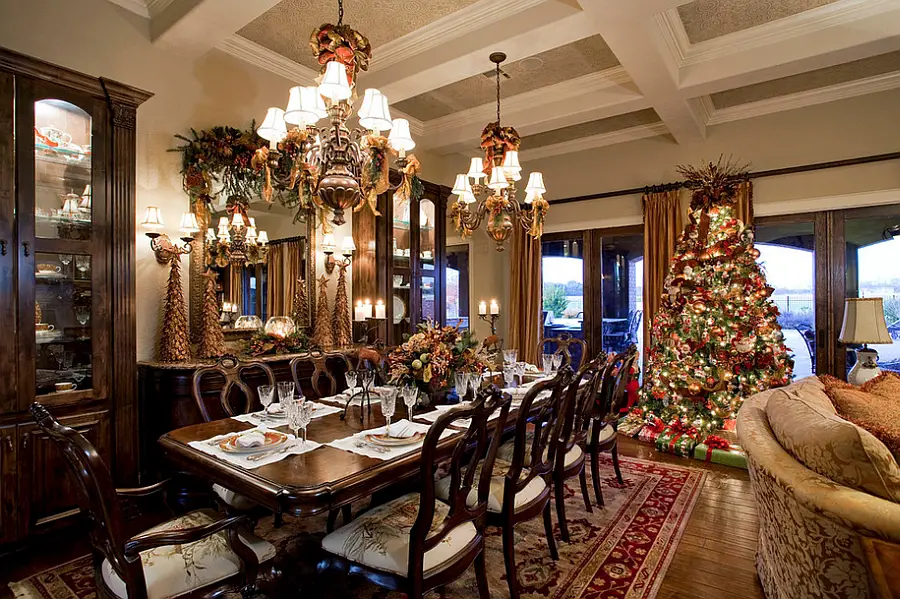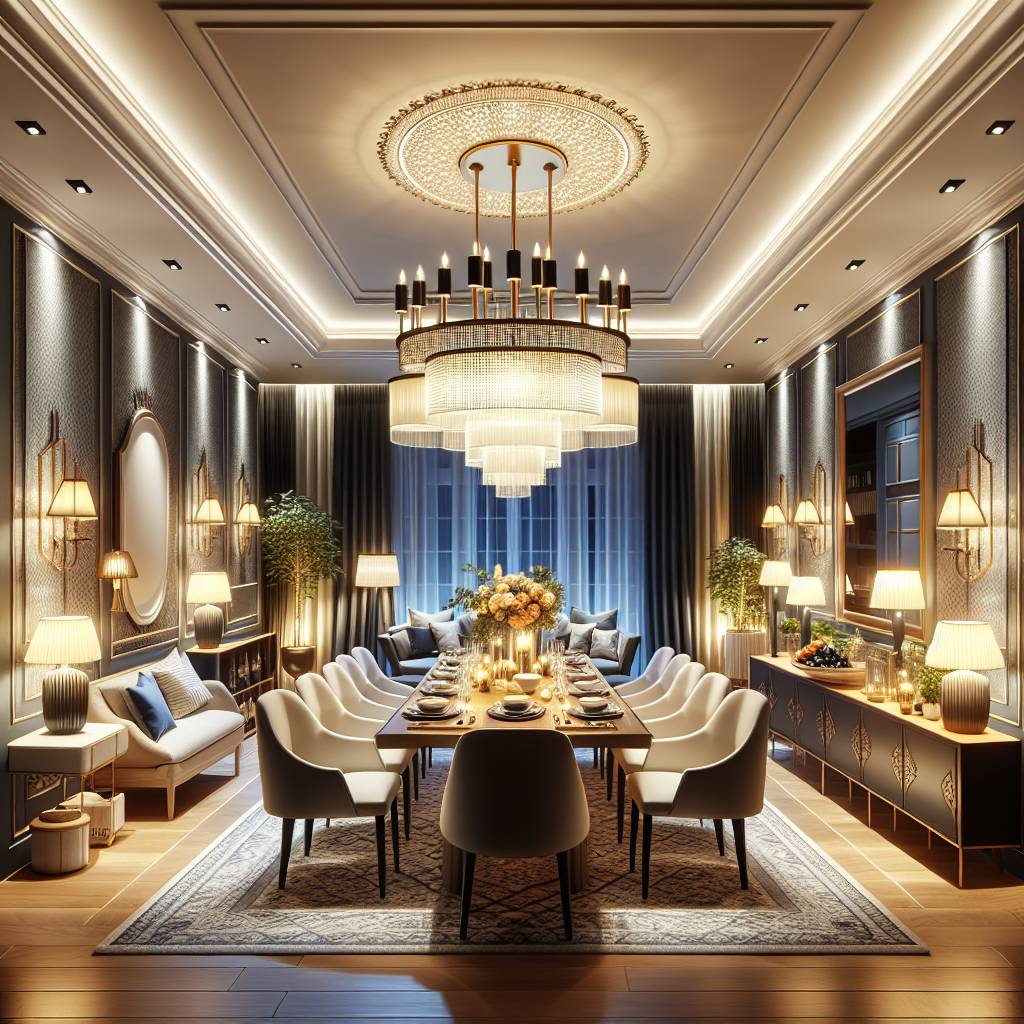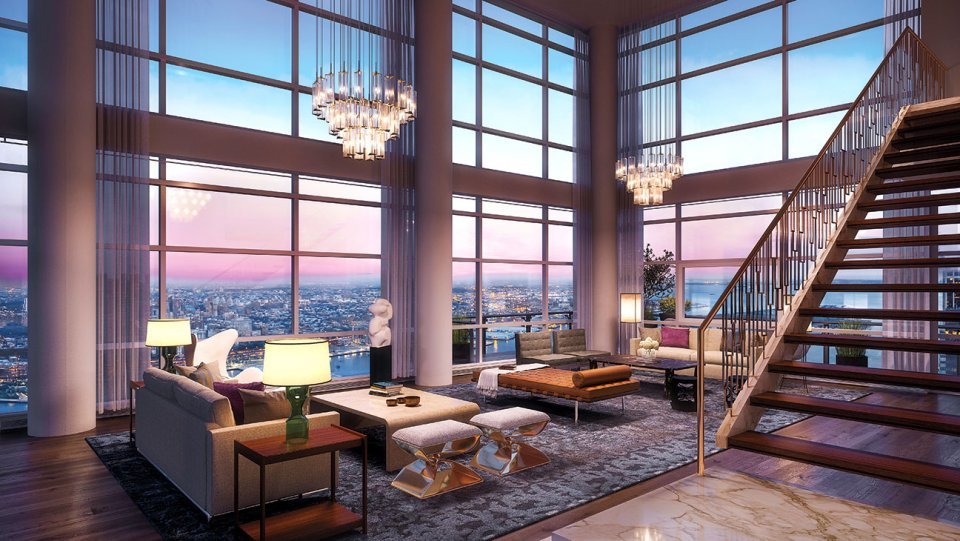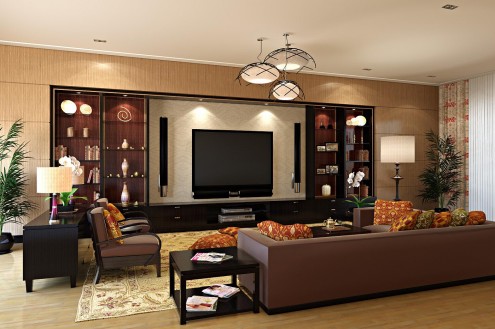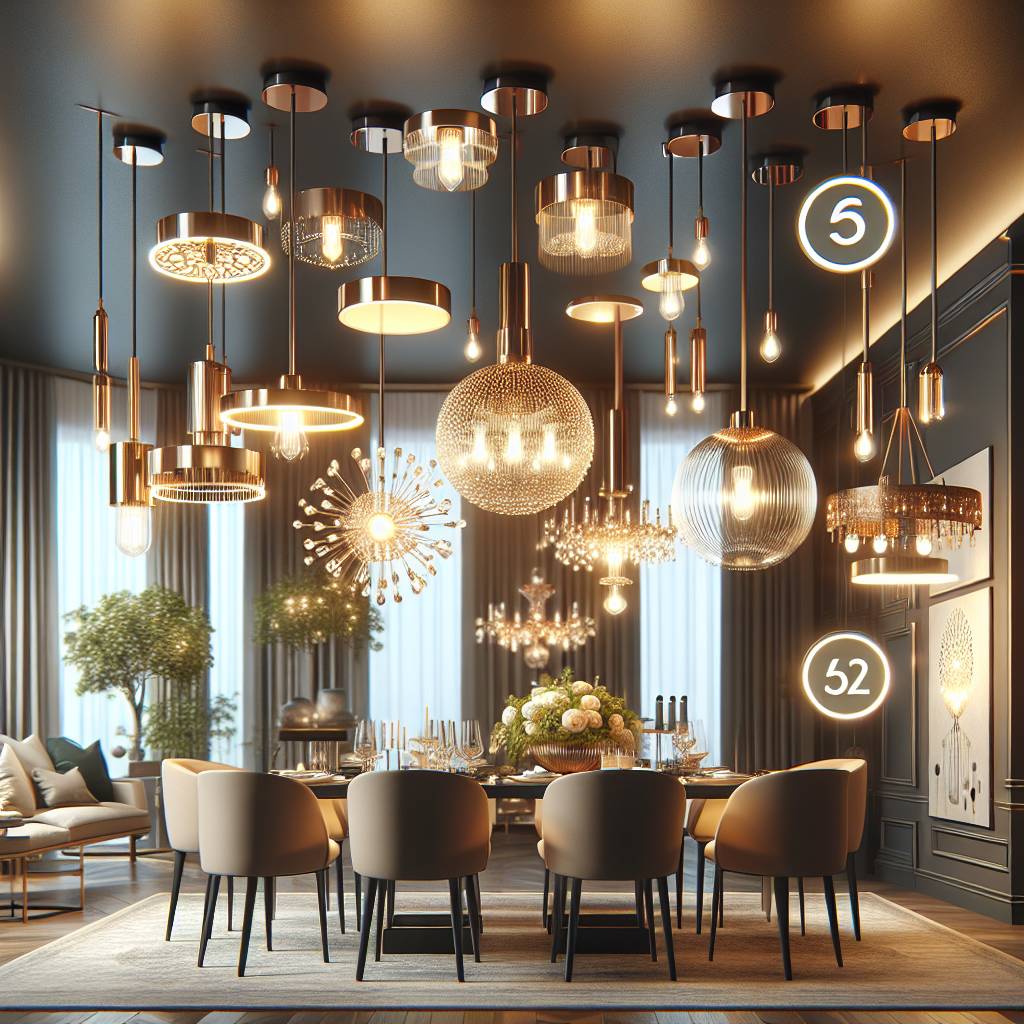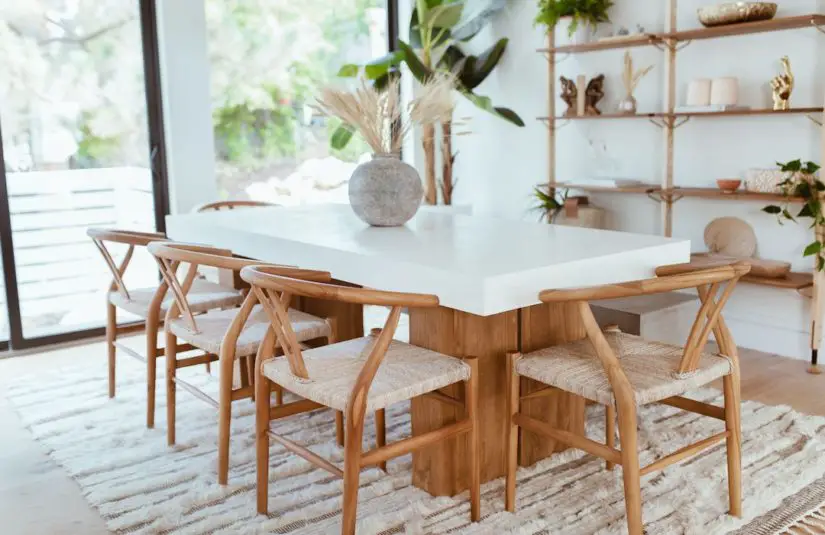Key Takeaways
- Choose multi-functional furniture to maximize space in a small dining room, such as extendable tables and stackable chairs.
- Embrace modern style and minimalist design to create an open and airy feel in compact dining areas.
- Create a cozy and comfortable dining nook by incorporating plush seating, soft lighting, and personalized decor.
- Utilize corner spaces with banquette seating to optimize seating capacity without sacrificing space.
- Use visual tricks like mirrors, light-colored walls, and strategic placement of artwork to enhance the perception of space in a compact dining room.
- Incorporate strategic lighting and decor elements to maximize the ambiance and functionality of small dining rooms, creating a welcoming and efficient space for both dining and living.
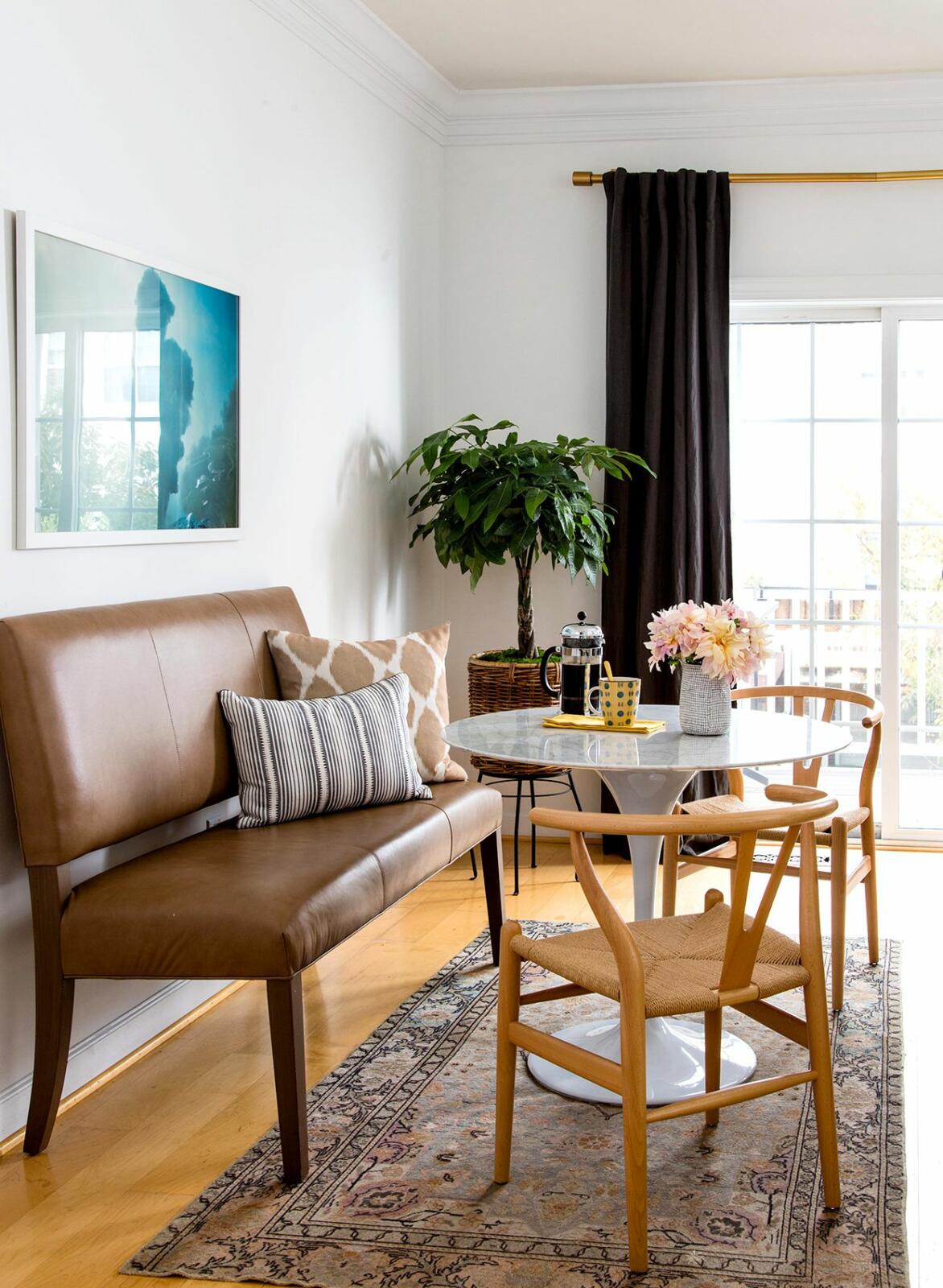
Small Dining Room Design Essentials
Light Colors
When designing a tiny dining room, using light colors can work wonders. These hues create an illusion of space in small spaces, making the room feel more open and airy. Light shades like soft blues, pale yellows, or neutral tones can visually expand the area and make it seem less cramped. By reflecting natural or artificial light, these colors brighten up the space and contribute to a more spacious ambiance.
In addition to painting the walls in light colors, choosing furniture and decor in similar tones further enhances the effect. This cohesive color scheme helps maintain a sense of openness throughout the small kitchen.
Round Table
Opting for a round table is an excellent strategy when aiming to maximize seating in a compact dining room. Unlike rectangular tables with corners that take up additional space, round tables have no sharp edges that encroach on walking areas or limit chair positioning. They allow for more flexible seating arrangements in the kitchen as there are no designated heads of the table.
Round tables in the kitchen also facilitate better conversation flow during meals due to their symmetrical shape which creates an inclusive setting for all diners. Furthermore, they fit snugly into corners or against walls without protruding into walkways—ideal for optimizing every inch of available floor area in small dining rooms.
Mirrors
Incorporating mirrors into the design scheme is another effective technique for maximizing space in a small dining room. Placing mirrors strategically can help reflect both natural and artificial light sources throughout the room, creating an illusion of depth and expansiveness within limited square footage.
Mirrors not only enhance brightness but also add visual interest by creating captivating reflections of decorative elements such as artwork or lighting fixtures. When positioned opposite windows or other sources of natural light, mirrors amplify luminosity while giving off an impression of increased square footage—a clever trick for making your tiny dining room appear larger than it actually is.
Selecting Furniture for Multi-Purpose Dining Spaces
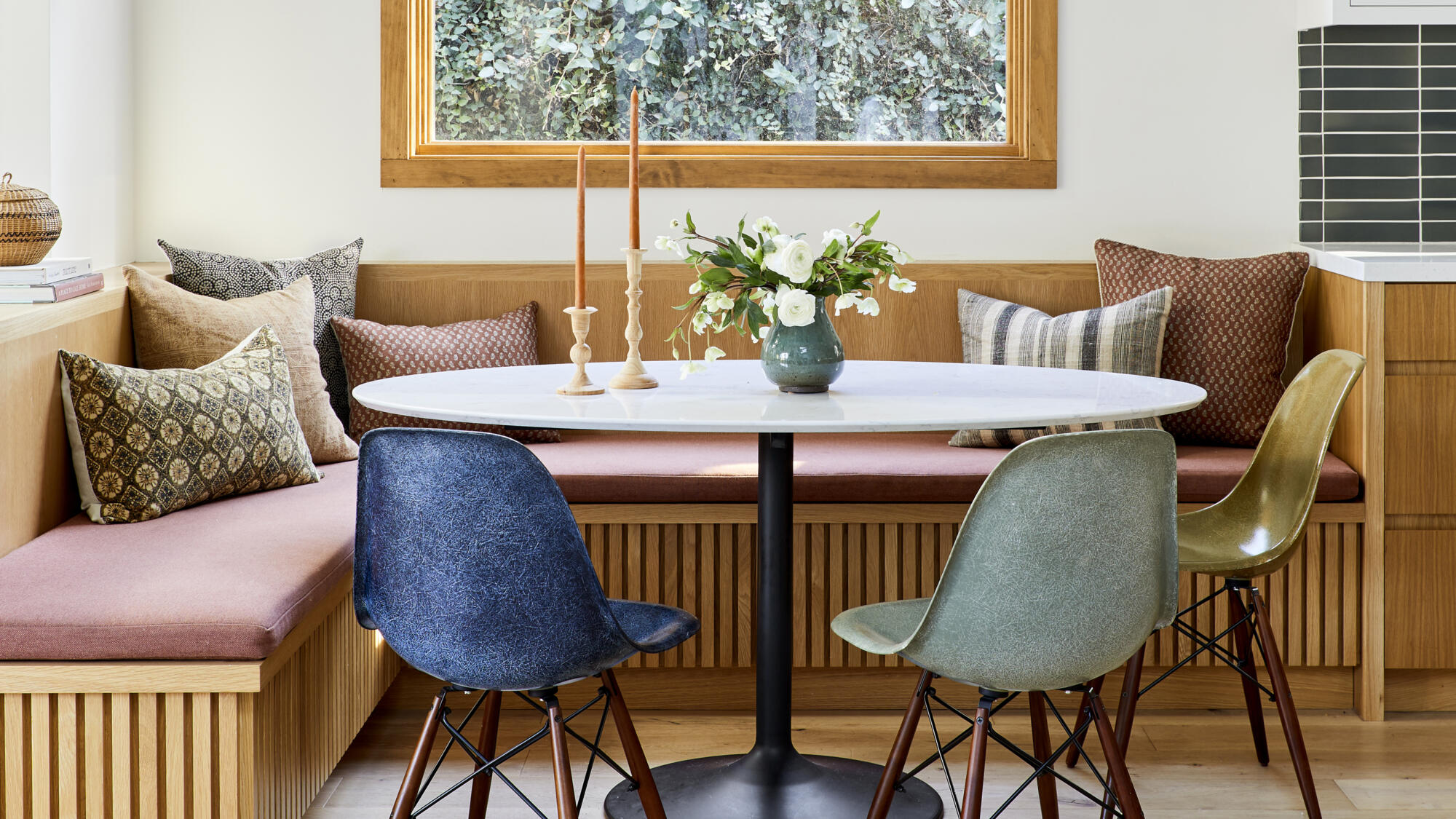
Built-In Storage
Selecting furniture with built-in storage is essential. Pieces like buffets, sideboards, or dining tables with drawers can help keep the room organized and clutter-free. By utilizing furniture that serves a dual purpose of storage and functionality, you can create an efficient and practical dining area.
For example, opting for a dining table with built-in shelves or cabinets underneath provides extra space to store tableware, linens, or even small kitchen appliances. This not only saves valuable floor space but also eliminates the need for additional storage units within the room.
Foldable or Extendable Tables
In a compact dining area, foldable or extendable tables offer flexibility without sacrificing style. These tables can be expanded to accommodate more guests during gatherings and then easily folded back into a smaller size when not in use. This adaptability makes them ideal for multi-purpose spaces where the dining area may also serve as an office or study area.
For instance, consider a round pedestal table with drop leaves that can be expanded to seat more people during dinner parties and then folded down to create extra space for other activities such as crafting or working on projects.
Versatile Seating Options
Versatile seating options such as stools or benches are perfect choices for maximizing flexibility in a compact dining room. Unlike traditional chairs, these seating alternatives take up less visual space and can be easily moved around to accommodate different needs within the room.
For instance, using backless stools that tuck neatly under the table when not in use allows for easy traffic flow in tight spaces while still providing ample seating when required. Benches along one side of the table offer casual seating options and can often be tucked away completely beneath the table after mealtime.
Embracing Modern Style in Small Dining Areas
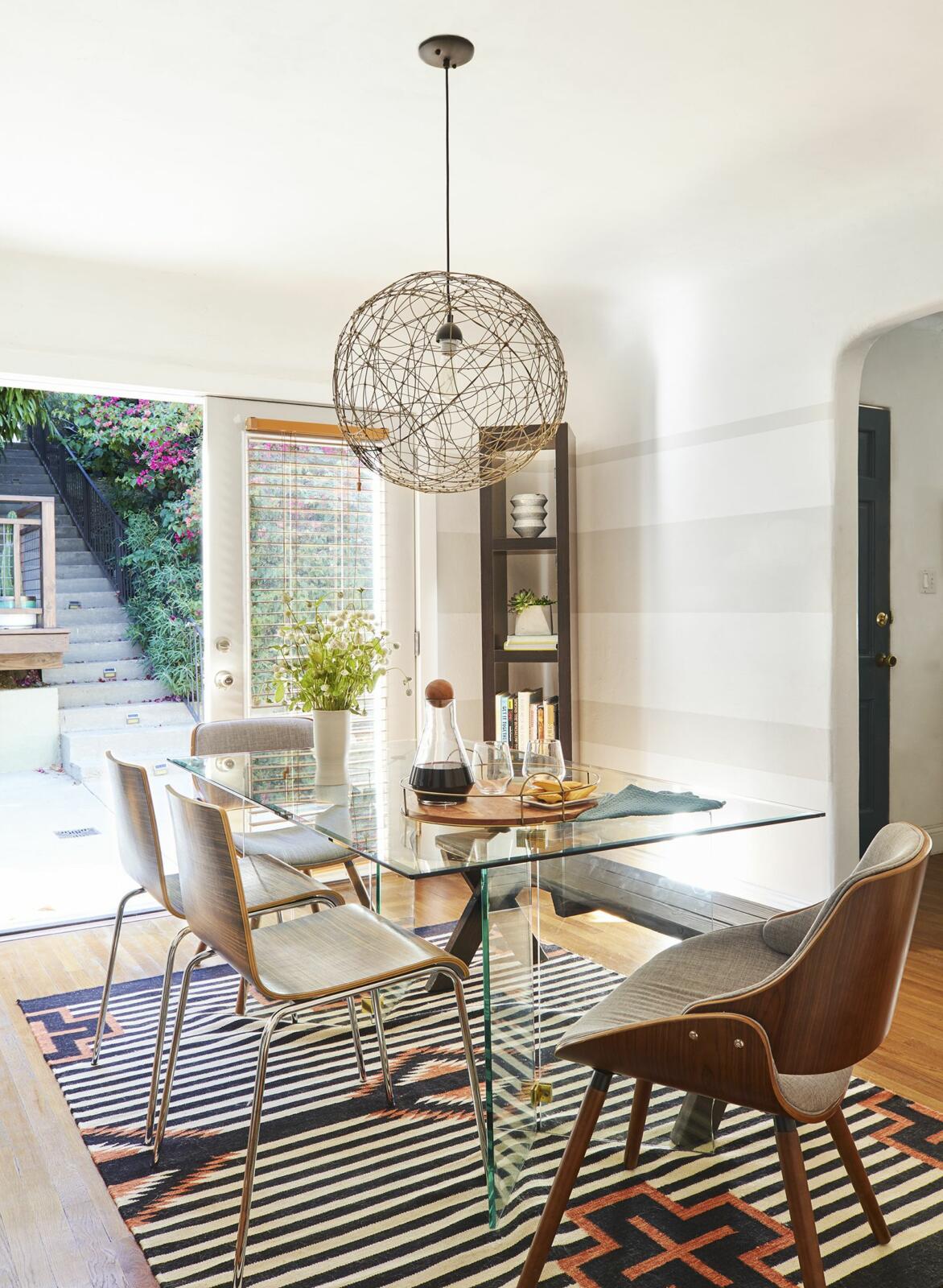
Sleek and Minimalistic Furniture Designs
Opting for sleek and minimalistic furniture designs is key. Choose tables and chairs with clean lines and slim profiles to create an open and airy feel. Consider a bistro-style round table, which not only saves space but also adds a touch of modern elegance to the dining area.
To achieve a contemporary look, select furnishings that serve dual purposes, such as extendable tables or stackable chairs. These versatile pieces allow you to adapt the dining space based on your needs while maintaining a modern aesthetic. By incorporating multifunctional furniture, you can make the most of limited space without compromising on style or comfort.
Monochromatic Color Scheme
In a small dining area, using a monochromatic color scheme can significantly contribute to creating a clean and cohesive aesthetic. Opt for shades like white, light gray, or soft beige for walls, furniture, and decor elements. This approach visually expands the space by reducing visual clutter while adding an understated elegance to the room.
By sticking to one color family throughout the dining area, you can achieve harmony in design without overwhelming the senses with contrasting hues. Integrating pops of color through art or accessories can infuse personality into the space without disrupting its modern appeal.
Open Shelving or Glass Cabinets
Incorporating open shelving or glass cabinets provides an opportunity to showcase modern dinnerware while maximizing storage in small dining areas. Utilize these features to display stylish dinner sets or decorative items that complement your contemporary design theme. Not only does this add visual interest but it also creates an illusion of spaciousness within the room.
Open shelving allows for easy access to frequently used items while contributing to an open and uncluttered atmosphere. Meanwhile, glass cabinets offer both functionality and aesthetics by keeping essentials organized while serving as elegant focal points in the dining area.
Incorporating a Cozy and Comfortable Dining Nook
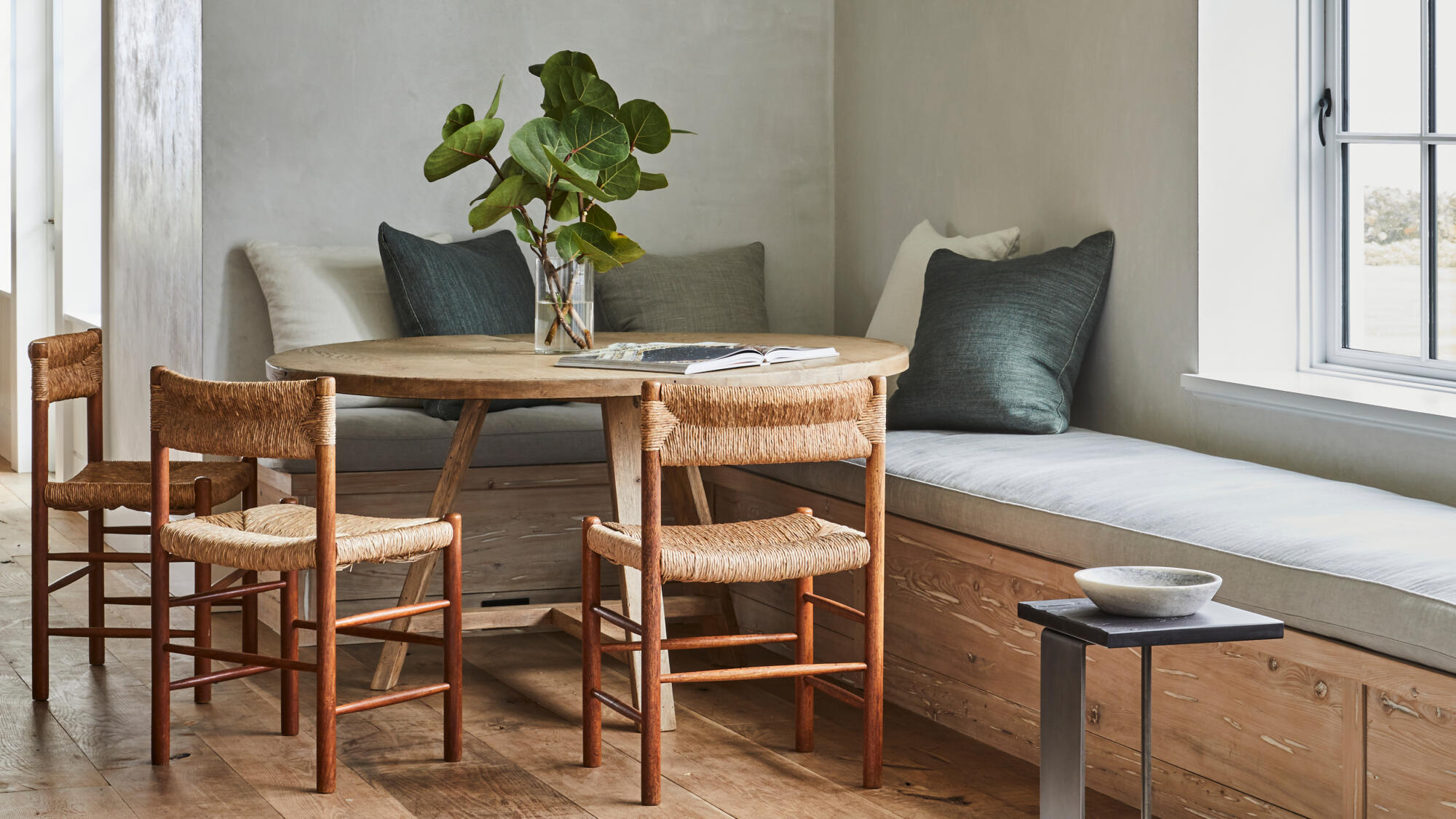
Plush Seating
Creating a cozy atmosphere is essential. One way to achieve this is by incorporating plush seating. Opt for comfortable chairs or benches with soft cushions.
To enhance the comfort level, consider adding throws and pillows to the seating area. These not only provide extra comfort but also contribute to the overall style of the space.
Soft lighting also plays a crucial role in creating a warm and inviting ambiance. Consider installing pendant lights or wall sconces above the dining nook to illuminate the area effectively without taking up valuable space on the table or floor.
Utilize Corner Spaces
Utilizing corner spaces can be an effective strategy when working with limited room in a compact dining area. Installing a built-in banquette or L-shaped bench along one of the walls can help maximize seating while making efficient use of available space.
By placing this type of seating arrangement in a corner, you free up more open space within the room, making it feel less cramped and more open.
Adding an area rug beneath this setup can help define the dining nook as its own distinct space within the larger room while also providing additional warmth underfoot.
Stylish Design Elements
Incorporating stylish design elements into your compact dining nook can elevate its overall look and feel. For instance, integrating an attractive breakfast nook booth with custom upholstery adds both functionality and visual appeal to your small dining area.
Consider positioning your breakfast nook near a window if possible; natural light streaming through during meal times creates an inviting atmosphere that enhances any dining experience.
Maximizing vertical wall space by incorporating shelves or hanging artwork not only adds personality but also frees up valuable floor real estate.
Choosing Space-Saving Tables and Compact Chairs
Expandable Tables
When dealing with a tight space in a compact dining room, it’s crucial to select furniture that maximizes the available area. Look for pedestal tables or those with drop-leaf designs. These tables can be easily expanded when needed for extra seating or collapsed to create more floor space. For instance, a round pedestal table provides flexibility while saving valuable square footage. This type of table allows you to accommodate different numbers of diners without occupying unnecessary space.
Consider investing in a rectangular drop-leaf table if your dining nook has limited dimensions. When not in use, simply fold down the leaves against the wall to reclaim the precious floor area. This clever design offers an efficient solution for smaller spaces where versatility is key.
Compact Seating Options
In addition to selecting the right table, opt for chairs that complement your limited space effectively. Choose slim-profile chairs that don’t overwhelm the room visually but still provide comfortable seating during meals. Alternatively, consider stackable chairs that can be neatly stored away when not in use, freeing up valuable floor space.
Another innovative option is transparent acrylic chairs which offer both functionality and style. These sleek and modern pieces create an illusion of spaciousness due to their see-through nature, making them ideal for small dining areas where visual openness is essential.
To make even better use of your compact dining room, look into multifunctional furniture pieces that incorporate storage elements within their design. For example, consider a pedestal table with built-in storage compartments or drawers beneath its surface to keep placemats, napkins, or other dining essentials close at hand without cluttering the tabletop or surrounding areas.
Utilizing Corners with Banquette Seating
Custom-Built Banquette
Maximizing space in a compact dining room involves utilizing every available area, especially the corners. One effective way to achieve this is by installing a custom-built banquette along the walls. This not only optimizes corner space but also creates a cozy and intimate dining area. The banquette can be tailored to fit seamlessly into the corner, making it an ideal solution for smaller dining rooms.
A custom-built banquette bench allows for flexibility in design, enabling it to conform precisely to the dimensions of the corner. By doing so, it eliminates wasted space that would typically occur with standard furniture pieces. This approach maximizes seating capacity without overcrowding the room, contributing to a more spacious and open feel.
Utilizing storage drawers underneath the banquette seats further enhances its functionality. These drawers provide valuable additional storage for items such as table linens, seasonal decorations, or even rarely used kitchen appliances. By incorporating these drawers into the design of the banquette bench, homeowners can capitalize on underutilized space while keeping essential items easily accessible.
Inviting Ambiance
To create an inviting ambiance within this compact dining setup, decorative pillows and cushions play a crucial role in softening and adding warmth to the banquette seating area. By strategically placing throw pillows and cushions along the bench’s backrest and seats, homeowners can infuse color and texture into their dining space while ensuring comfort during meals.
The addition of vibrant or patterned fabrics on these pillows can inject personality into an otherwise neutral setting while complementing any existing decor elements within the room. Moreover, incorporating plush cushions on top of each seat adds an extra layer of comfort for diners during extended meal times or gatherings.
Visual Tricks to Enhance the Perception of Space
Strategic Mirror Placement
Strategically placing mirrors in a compact dining room can work wonders in creating an illusion of depth and openness. By reflecting light, mirrors make the space feel larger and more airy. For instance, hanging a large mirror opposite a window can help bounce natural light around the room, making it appear brighter and more spacious. Using mirrored furniture or decor items can also contribute to this effect by adding visual interest while maintaining an open feel.
Another way to use mirrors strategically is by incorporating them into cabinet doors or as part of a gallery wall. These placements not only add dimension but also enhance the overall aesthetic appeal of the dining area without compromising on limited space.
Vertical Stripes for Height Enhancement
Incorporating vertical stripes on walls or curtains is an effective design technique that creates the illusion of height in a compact dining room. Whether through wallpaper with vertical patterns or vertically striped curtains, this simple yet impactful trick draws the eye upward, giving the impression of higher ceilings and subsequently expanding the perceived space within the room.
By utilizing this technique alongside banquette seating along one wall (as discussed earlier), you create a seamless flow from floor to ceiling that visually elongates and opens up your dining area even further.
Embracing Natural Light
Maximizing natural light is crucial when aiming to enhance any small space’s perception. Keeping window treatments minimal allows ample natural light to flood into your compact dining room, instantly brightening up every nook and cranny. This influx of sunlight not only makes your space feel more inviting but also gives off an expansive vibe due to its ability to eliminate harsh shadows that might otherwise make your dining area seem cramped.
Lighting and Decor to Maximize Small Dining Rooms
Focal Point with Pendant Lights or Chandelier
Lighting plays a crucial role. By installing pendant lights or a chandelier, you can draw attention upward, creating a focal point that directs the eyes away from the limited floor area. This draws focus to the vertical space, making the room feel more expansive.
Another advantage of using pendant lights or a chandelier is their ability to provide ample illumination without occupying valuable floor or tabletop space. The hanging nature of these light fixtures ensures that they do not encroach on the already limited surface area available in small dining rooms.
Save Space with Wall Sconces and Recessed Lighting
In addition to overhead lighting solutions, wall sconces and recessed lighting are excellent choices for maximizing space in compact dining areas. These fixtures help save precious tabletop real estate by eliminating the need for bulky lamps or standing light sources.
By incorporating wall sconces or recessed lighting into your dining room design, you free up valuable surface areas while still achieving adequate illumination. This creates an uncluttered environment that contributes to an overall sense of spaciousness within the room.
Embrace Minimalistic Decor for an Open Feel
To further enhance the perception of space in a compact dining room, opt for minimalistic decor choices. Avoid cluttering surfaces with unnecessary items as this can make the area feel cramped and claustrophobic. Instead, focus on streamlined furnishings and decorative pieces that contribute to an open and airy ambiance.
Combining Living and Dining Areas in Compact Spaces
Define Separate Zones
To make the most of a compact dining room within a living space, it’s essential to define separate zones. This can be achieved through strategic furniture placement or using rugs to visually distinguish between the living and dining areas. For example, placing a rug under the dining table creates a distinct zone for meals while maintaining an open flow with the rest of the living area.
When defining separate zones, consider utilizing furniture as visual dividers. A couch or bookshelf can act as a subtle barrier between the dining and living spaces without completely closing off either area. By doing so, you create distinct sections within your living space without sacrificing square footage.
Multifunctional Furniture
Maximizing space in a compact dining room often involves choosing furniture that serves dual purposes. Opt for a dining table that can also function as a workspace during non-meal times. This allows you to make efficient use of limited space by incorporating multifunctional pieces into your living room setup.
In addition to multifunctional tables, consider seating options that offer storage solutions. For instance, benches or ottomans with hidden compartments provide extra storage while serving as seating for both dining and lounging areas in your compact living environment.
Visual Separation with Room Dividers
Utilize room dividers or curtains to create visual separation between the living and dining areas within your small space. This not only adds privacy but also enhances the feeling of distinct zones despite sharing one common area.
Room dividers come in various styles, from folding screens to shelving units that serve as partitions while offering additional storage opportunities. On the other hand, curtains allow for flexible division based on when each area is being utilized – whether it’s mealtime at the dining table or relaxation time in the living room.
Frequently Asked Questions
How can I make a small dining room feel more spacious?
To create the illusion of space in a compact dining area, utilize light-colored paint, strategically placed mirrors, and unobtrusive furniture. Consider incorporating multi-functional pieces to maximize functionality without overwhelming the space.
What are some tips for selecting furniture for a multi-purpose dining space?
When choosing furniture for a multi-purpose dining area, opt for versatile pieces that can serve multiple functions. Consider collapsible tables, stackable chairs, and storage benches to optimize the use of space while maintaining practicality.
How can I combine living and dining areas in compact spaces effectively?
To seamlessly merge living and dining areas in limited spaces, focus on creating visual continuity through cohesive color schemes and complementary decor styles. Utilize clever furniture placement to delineate distinct zones while maintaining an open flow within the combined space.
What lighting strategies work best to maximize small dining rooms?
In small dining rooms, prioritize natural light by using sheer window treatments or opting for translucent materials. Supplement with ambient lighting such as pendant lights or wall sconces to create an inviting atmosphere without overcrowding the limited space.
What are some effective ways to incorporate a cozy and comfortable dining nook in a small area?
For creating a cozy dining nook in limited spaces, consider built-in banquettes or corner seating paired with plush cushions. Select smaller-scale tables that fit comfortably within the designated nook while allowing ample maneuvering room around it.

